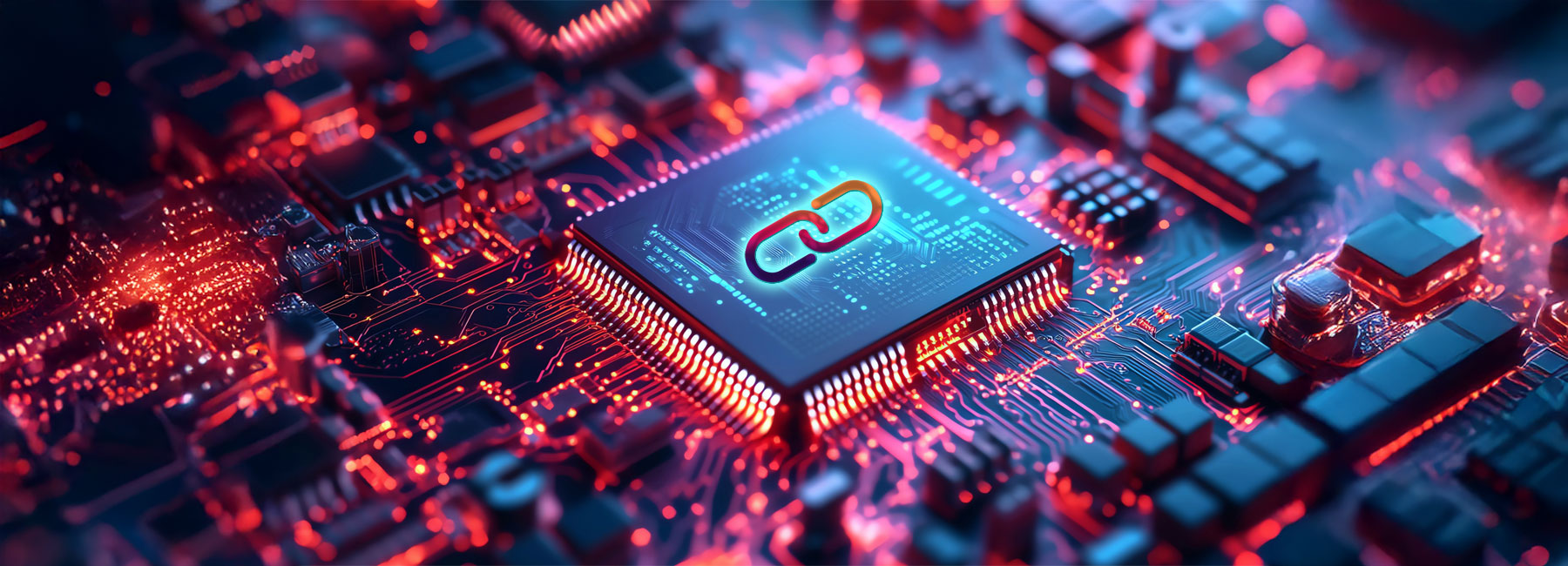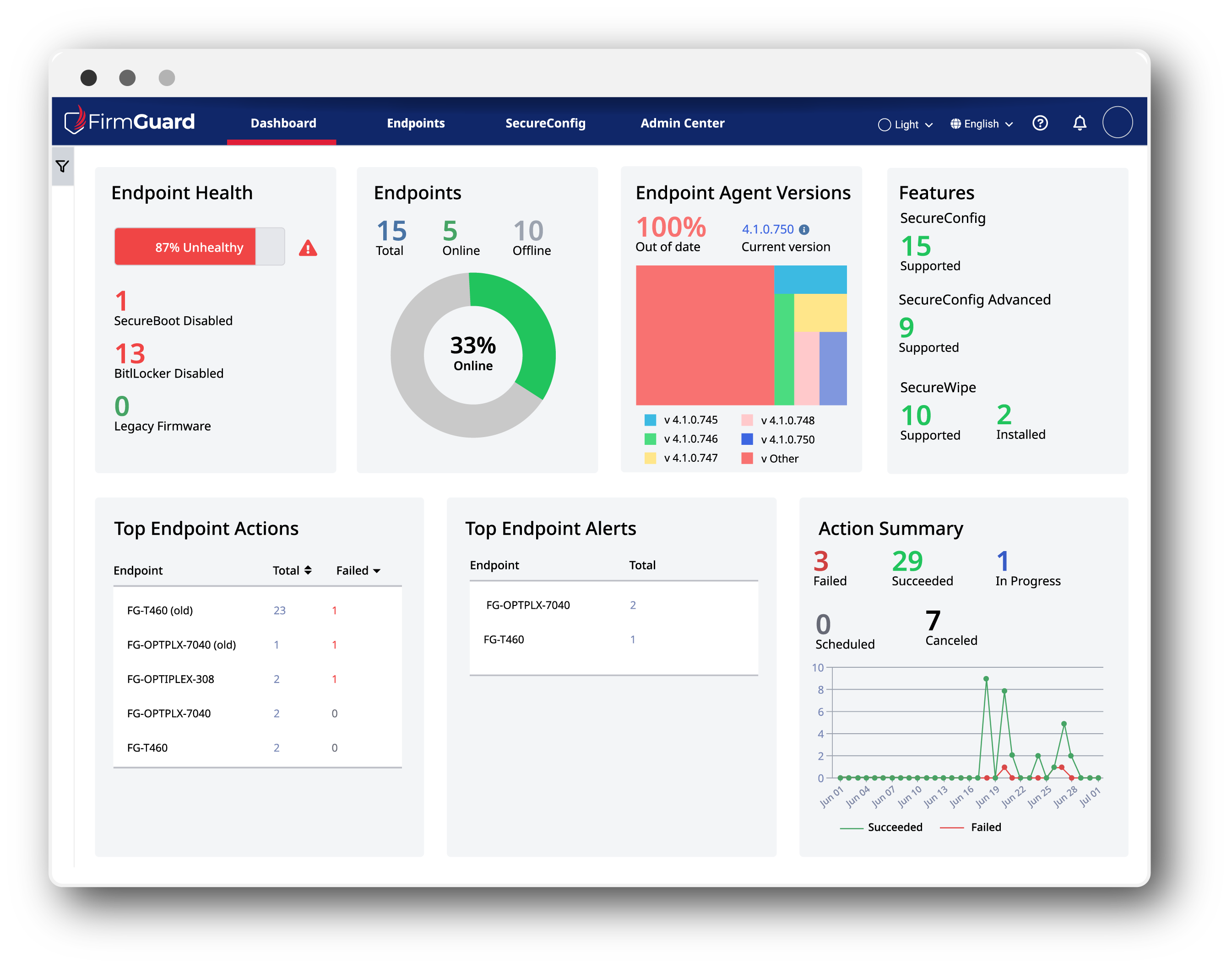BIOS firmware is critical to system performance and security, but traditional BIOS updates require physical access to each endpoint. It goes without saying that this is an arduous and time-consuming task for technicians, who often must travel long distances to access your (or your clients’) endpoints. Remote BIOS update changes this, enabling IT & security teams to update BIOS firmware across devices without leaving their desks.
Read on to learn how this remote BIOS update works, and why it’s in high demand.
What is Remote BIOS Update?
Remote BIOS update allows IT administrators to update the BIOS firmware remotely, eliminating the need for physical endpoint access. This is very different from traditional BIOS updates, which require manual updating and rebooting each endpoint. Remote BIOS update is an important step in endpoint security, as it ensures that each endpoint always has the latest security updates, while boosting your security team’s efficiency by minimizing the need for on-site travel.
The Challenge: Remote BIOS Update Across OEMs
Now, it gets slightly more complicated when you consider that different OEMs (e.g., Dell, HP, Lenovo, Acer etc.) often have different BIOS update methods, making standardization a major challenge for IT administrators and security teams. Each manufacturer often has its own set of tools, interfaces, and processes for BIOS update. This has resulted in a fragmented landscape, where it is extremely difficult to standardize updates across manufacturers. This lack of uniformity forces IT technicians to use multiple tools and often requires them to travel on-site to update each endpoint’s BIOS manually. This takes time away from troubleshooting more serious issues and alerts, as well as increasing travel costs.
The alternative to on-site BIOS update is usually getting on the phone with someone on-site and talking them through the process (or more likely just not doing it at all). This, of course, is a painful and often time-consuming process, especially when the person on the other end is not technically proficient. It is also prone to human error, which potentially means remaining exposed to BIOS security risks.
These technical complexities not only slow down the process but also create inconsistencies in BIOS update across endpoints. Such inconsistencies can pose significant security risks and compliance issues. In fact, according to a Microsoft report, more than 80% of companies experienced a firmware security attack in the last 2 years, and internal FirmGuard data show that up to 25% of all endpoints are out-of-date, highlighting the need for greater focus on firmware updates.
25%
of all endpoints have out-of-date BIOS firmware.
Benefits of Remote BIOS Update
Now that we’ve spoken about the challenge of BIOS update across different manufacturers or OEMs, let’s look at how and why vendor-agnostic, remote BIOS update is a game-changer for endpoint security. The ability to remotely update and secure BIOS firmware, regardless of the manufacturer, is of huge benefit – from both a business and operational standpoint. In addition to ensuring greater BIOS security, it enhances efficiency by reducing time spent traveling on-site to perform manual updates. Here are some of the top benefits of remote BIOS update:
- Centralized Management: Remote BIOS update allows IT administrators to manage and schedule updates across endpoints from a single dashboard. This centralized approach simplifies management, ensuring consistent updates and reducing the risk of errors associated with manual updates.
- Time and Cost Efficiency: By reducing the need for on-site technician travel, remote BIOS update saves both time and money. IT and security teams can easily slot BIOS updates into existing pre-scheduled maintenance windows and just make it part of their standard endpoint update process.
- Solve “Ghost Issues”: Out-of-date BIOS is often the cause of endpoint problems which appear for no apparent reason such as Bluetooth suddenly stops working. With remote BIOS update in place, these “ghost issues” become a problem of the past.
- Scalability: MSPs and enterprises alike benefit from the scalability which remote BIOS update provides. It allows for quick deployment of firmware updates across many endpoints at once. This ensures all systems are up to date and is especially valuable for businesses that need to rapidly respond to BIOS security alerts and security notifications.
How FirmGuard Achieves Remote BIOS Update Across OEMs
FirmGuard’s SecureUpdate feature enables remote BIOS update across various OEMs, including Dell, HP, Lenovo, Acer and more, by allowing administrators to make updates from the FirmGuard dashboard, just as if you were sitting in front of the endpoint. FirmGuard keeps track of the latest firmware version for each manufacturer and conveniently alerts an administrator when BIOS is out-of-date and needs to be updated. From there, an admin can update BIOS with the click of a button or schedule the update for a future time. To ensure smooth and consistent update, FirmGuard utilizes the manufacturer’s update mechanism and therefore is just remotely initiating an update without a human having to be in front of the screen. In short, FirmGuard SecureUpdate provides greater levels of BIOS security, saves technicians time, and ensures compliance with industry standards such as ISO & NIST.







